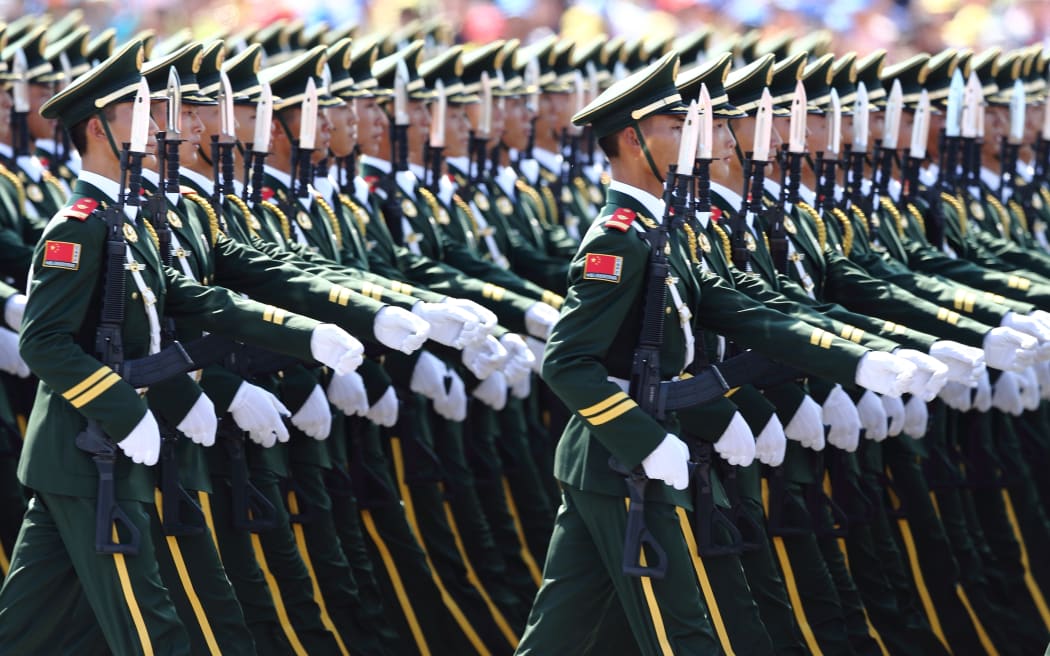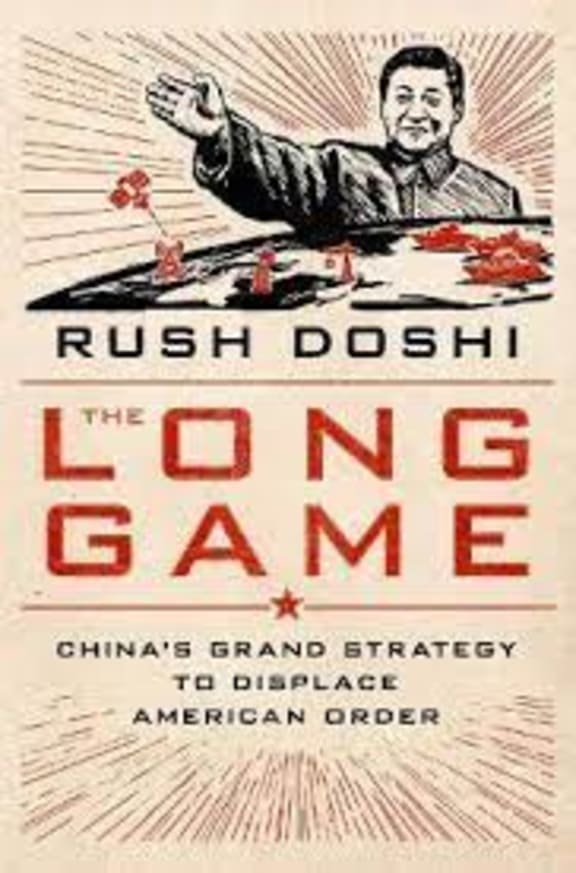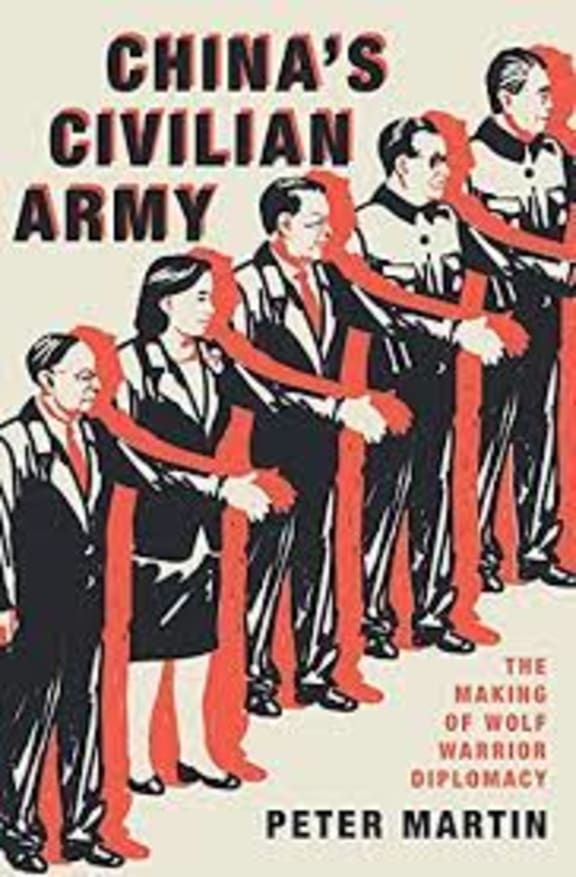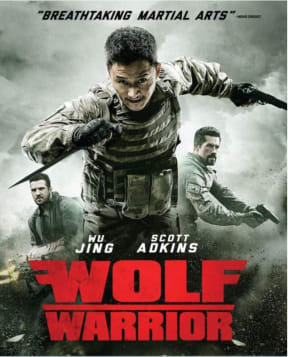Does China have a grand plan to take over the world? Yes, says a landmark book on China’s rise, which has sparked debate among China-watchers, partly because of its quality, partly because of its methodology and partly because the author is now in a position to influence US policy as an advisor to Joe Biden on the National Security Council.

Chinese PLA (People's Liberation Army) soldiers march past the Tian'anmen Rostrum during the military parade to commemorate the 70th anniversary of the victory in the Chinese People's War of Resistance Against Japanese Aggression in Beijing, China, 3 September 2015. Photo: AFP
Rush Doshi in The Long Game; China’s Grand Strategy to Displace American Order argues that since the end of the Cold War, China has been working to a clear plan, which has evolved through a series of shocks. Doshi, a former director at the Brookings think-tank's China Strategy Initiative, says the first phase came when China faced a “trifecta” of events after 1989 - isolation after Tiananmen Square, the collapse of the Soviet Union and the rapid success of US in the first Gulf War. China found itself isolated and facing a powerful US it suspected wanted to undermine Communist rule.

The Long Game by Rush Doshi Photo: Supplied
So, while it held fast to Deng Xiaoping’s dictum to “hide your strength and bide your time”, in practice that meant seeking to blunt American power. Militarily, says Doshi, China invested not in offensive weapons but in submarines, mines and missiles, aimed at denying US warships control of the seas off China. It joined regional bodies like APEC and ASEAN, not out of a newfound interest in multilateralism, but to make sure America could not encircle China by allies. It broke the hold of sanctions after Tiananmen Square by joining regional trade blocs to defang them. It was a systematic attempt to “blunt” America’s power, says Doshi.
Things changed suddenly with the Global Financial Crisis of 2008. Doshi says America, distracted by economic problems and bogged down in Iraq and Afghanistan, looked weak to Beijing. So, strategy shifted from blunting to building a China-led Asia. In came policies to build aircraft carrier units and landing and supply ships as well as overseas bases to project power. It launched its own initiatives, the Asian Infrastructure Investment Bank and the Belt and Road offering investment to Asia and then beyond.
Things shift again in 2017. The election of Trump and the Brexit imbroglio seem to offer “changes not seen in a century" announced Xi Jinping. Chinese strategy shifted from regional to global power building.

China's Civilian Army by Peter Martin Photo: Supplied
This may seem deceptively simple. But what Doshi is determined to prove is that there is a plan, and it is communicated clearly to leaders to enact; he does it by studying the words and behaviour of the Party. He argues if there is one state which could organise a grand strategy it would be a disciplined Leninist, even Soviet-style, Communist Party. Like A Kremlinologist of old, Doshi scoured a huge volume of Party texts. Reading Communist prose, he says, is “akin to.... swallowing sawdust by the bucketload”. His great strength is to explain how even subtle shifts in wording would be interpreted and then enacted by bureaucrats, used to having “study sessions” on the leaders’ utterances. If all this seems incredibly arcane - Marxist dialecticism even makes an appearance - then somehow Doshi makes it readable.
The Long Game has already opened debates among foreign policy wonks, like whether China would be so focused on America in its strategy to the exclusion of all else. Or whether Beijing really does follow a unique plan or is it simply on a path that most rising powers follow instinctively, blunting the leader, building a new coalition. To be fair to Doshi, he is generous in giving space to competing arguments, even when he disagrees.
But if Doshi is correct, then you would expect the outline of China’s grand strategy to show up among its diplomats. And it partly does in Peter Martin’s very good book China’s Civilian Army: The Making of Wolf Warrior Diplomacy.
Martin traces a similar trajectory, from diplomats trying to break out of the isolation of China after Tiananmen Square to growing assertiveness after the Global Financial Crisis and then to a strong nationalist stance under Xi. But while Martin, a political reporter for Bloomberg, shows China’s diplomats as highly attuned to shifts in policy in Beijing he never quite attributes it to a grand strategy. What he does show is the discipline of China’s diplomats to carry out the Party’s orders.

China's total military spending is growing. Photo: AFP
When the Communists took power in 1949, the Nationalist’s diplomats were dismissed or fled. It fell to Mao’s right-hand man, the tireless and charismatic Zhou Enlai, to recruit from the “frontline proletarian” generals of the Communist army, train them in everything from using a knife and fork to active listening, and then send them out as China’s emissaries. They were, said Zhou, a civilian army. “Changing from military to diplomatic struggle is simply a matter of changing the front on which one conducts conflict,” he told them. Struggle was in the DNA from the start, says Martin.

The blockbuster Wolf Warrior film poster Photo: Supplied
In his readable and entertaining book, he charts how they fared, from the triumphs of charming developing countries in the 1950s to the so-called “wolf warriors” of today, reacting fiercely to every perceived slight of China. The nickname comes from the massive grossing films of a Rambo-like lone fighter battling to save ordinary Chinese – much of the kapow of the sound mix was provided by Wellington's Park Road Post Production. Its tagline read; “Even though a thousand miles away, anyone who affronts China will pay.”
Many of Martin’s best examples of diplomatic fury come from our Pacific neighbourhood. Australia’s former foreign minister Julie Bishop being dressed down at the start of a bilateral meeting, usually a time of pleasantries, after Australia questioned Chinese actions in the South China Sea. A row at the Pacific Islands Forum in 2018 when Nauru’s president refused to change the speaking order and the Chinese representative did a lap of the conference table indicating his fury to each participant; and a scuffle over the flag used on a cake in celebrations in Suva for the national holiday of Taiwan.
So where is this heading? Both Martin and Doshi see this state of tension continuing and intensifying, especially as China heads towards a series of self-imposed timelines for growth – the centenary of the Peoples Liberation army in 2027 and 100 years of Party rule in 2049.
Doshi argues the US must push back on China by using its own blunting tactics, or asymmetric competition, since China is now so powerful, he says. It should blunt China’s navy in the South China Sea, make it harder for China to get overseas bases, find alternatives to China-dominated regional groupings and undermine the Belt and Road.
Perhaps the ultimate test of The Long Game will be whether that becomes Biden’s China policy.
The Long Game: China’s Grand Strategy to Displace American Order by
Rush Doshi
Oxford University Press
China’s Civilian Army: The Making of Wolf Warrior Diplomacy by
Peter Martin
Oxford University Press

